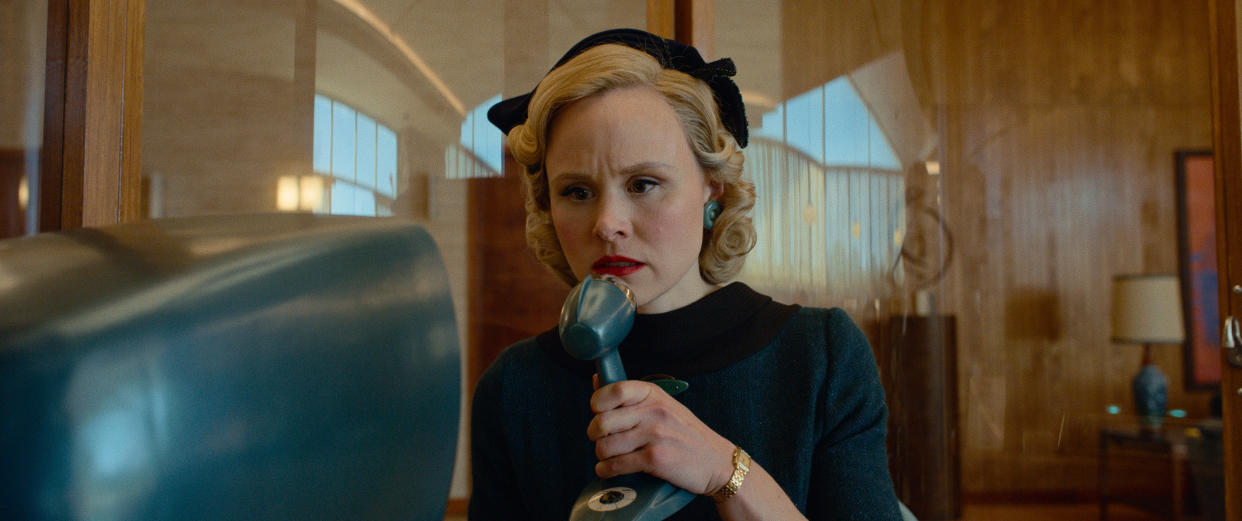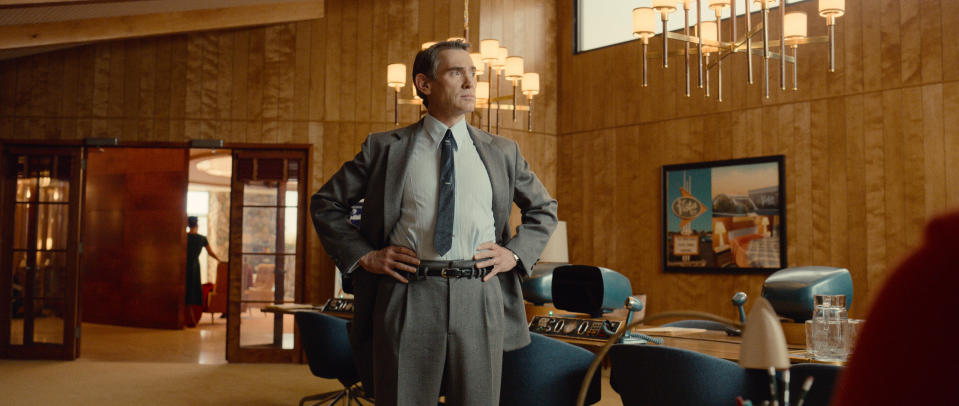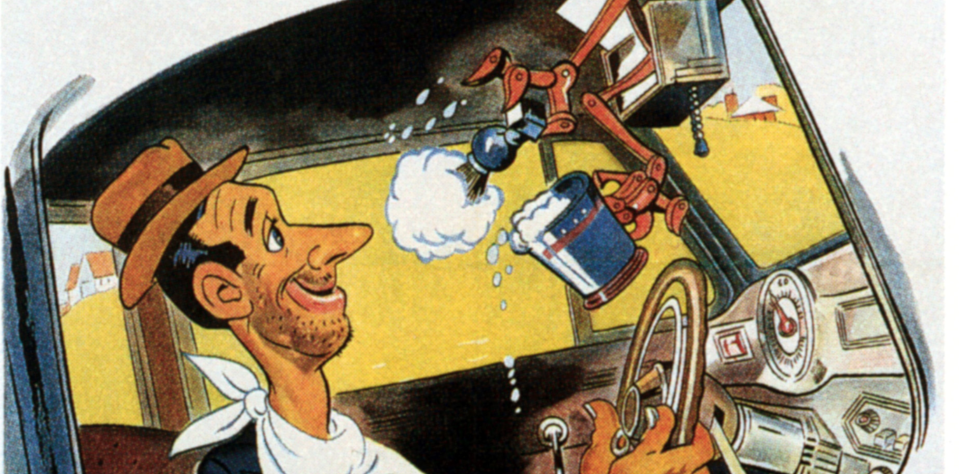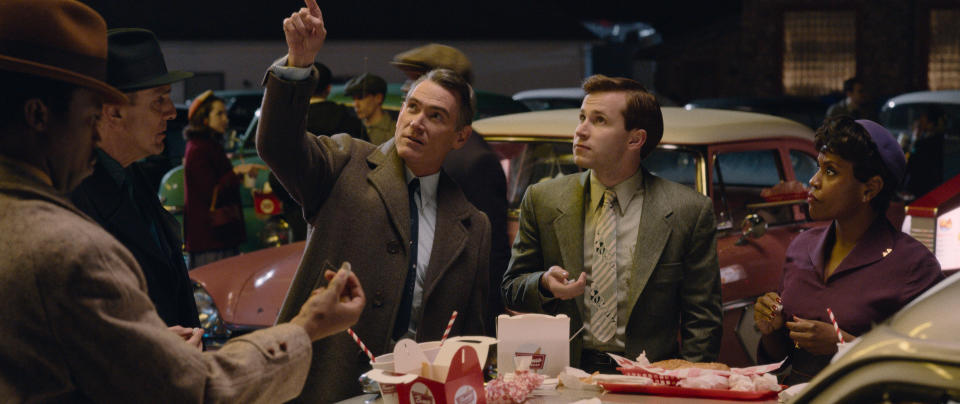Tex Avery and Flying Cars: Finding the Darkness in the World of ‘Hello Tomorrow’

- Oops!Something went wrong.Please try again later.
The world of “Hello Tomorrow” loves both the retro and future in its retro-future aesthetic, lending the Apple TV+ series a visual distinctiveness. While the story itself — an exploration of ambition, the American Dream, and family ties — deals in classic tropes, the show’s presentation blends the greatest stylistic hits of the ’40s, ’50s, and ’60s with technological leaps of fancy straight out of a World’s Fair catalog and an episode of “The Jetsons.”
Less obvious an influence? Tex Avery, one of the most significant contributors to the Looney Tunes characters and the man behind a series of cartoons outlining the World of Tomorrow, whose work acted as inspiration for the pleasant facades and gizmo-gadgets of the series’ Vistaville. A mouse-trap, Rube Goldbergesque vibe suffuses the world of “Hello Tomorrow,” where cheerfulness masks latent violence — as suburban housewife Marie (Annie McNamara) finds out all too quickly moments into the first episode, when she’s run over by a stork-driven hover van. It was that kind of Tex Avery flair that production designer Maya Sigel wanted to bring to the world of a show that promises optimism and happiness — until a stork delivering smiles to pedestrians puts a woman in a coma.
More from IndieWire
'Hello Tomorrow!' Built a New Version of Baseball -- and Wants to Show You More of It
Billy Crudup's 'Hello Tomorrow' Shoots for the Moon and Gets Lost in the Stars
“That whimsical, playful quality that [those cartoon gadgets] have, that was super inspirational for us,” Sigel told IndieWire. “There was a lot of thought being put into this kind of streamlined movement for train travel and air travel and making everything look kind of aerodynamic. And knowing that our gadgets were going to hover, fly, or move through spaces, [using that style] was really important to me, too.”
Researching everything from roadside Americana to Art Deco flourishes, Sigel’s designs evoke both the promise of a world in thrall to the future partly as a dream of escaping their Earthbound problems. The Vista Motor Lodge, where traveling salesman Jack (Billy Crudup) sets up shop, is intentionally a little bit of both. “It was important to me that it was the bringing together of those two worlds. So you have some traditional lines, and then you have the rotunda in the center, which is the circle. You have Vistaville colors, like a fall color palette. It’s all Earth tones. The moon is cooler, sexier. It’s blue, it’s metallic, it’s silver,” Sigel said.

Apple TV+
As Jack and his team —played by Hank Azaria, Nicholas Podany, Dewshane Williams, and Haneefah Wood — go about the business of convincing the good people of Vistaville to splurge on timeshares on the moon, the sense of excitement and possibility for the World of the Future in “Hello Tomorrow” is perfectly represented via its hover-cars (and even hover-prams). But delivering on the long-promised possibility of flying cars, even in fiction, was a big challenge for Sigel and her team.
“At first we thought we might build [the cars] from scratch and then we realized, with the time and the money that we had, we needed to think of a smart way to modify cars from the period,” Sigel said. “We had amazing sculptors, and they sculpted these covers out of styrofoam and painted them metallic, custom fit for each different car or van. That was all practically done.”

Courtesy Everett Collection
Propmaster Eric Cheripka was excited to tackle each custom job on the hover-cars and bring much more than a fresh coat of paint to the vintage cars the show used. “If you look at cars nowadays, it’s almost generic. I mean, basically they all look the same. Even the new ones have this certain shape and certain size, but nobody would steal anyone’s shape back then, you know what I mean? A Cadillac did not look like a T-Bird,” Cheripka told IndieWire. “So it was so much fun. We had these beautiful designs.”
To emphasize the design of the cars and give the illusion of movement, Cheripka eventually fitted the show’s hover-cars out with jib arms to create multi-plane motion. That motion, along with chroma-colored skirts to hide the boring terrestrial-bound wheels that the VFX team later removed, is what really sells these cars of the future.

Apple TV+
The show takes the same basic approach to every device and robot that floats through the air. Both the production and the VFX team puppeteered robots and hover vehicles, sometimes making marionettes out of diner bots and sometimes remote-controlling floating hair salons like a huge RC toy. For the mobile salon chair in Episode 1, props-maker Frances Smith disassembled an actual vintage hair salon chair and then put a Rascal scooter underneath, so it could be piloted across the street. “I always wanted to do props that were funky, very gadgety, and almost mousetrap-y,” Smith said. “A lot of that got to happen on this show.”
The world of “Hello Tomorrow” is chockablock with props that speak to the reckless, relentless optimism Jack is trying to take advantage of. “I purchased a lot of things from the ’40s, ’50s, and ’60s, electronics and all kinds of different things. I had an arsenal so I could pull things apart and put things together again. It was almost like Robinson Caruso,” Ceripka said. But it was important to Sigel, the production team, and the entire creative team that the cast be able to physically interact with as much of the world of Vistaville as possible.
“I think it goes a little beyond what’s out there now in television,” Cheripka said of the series’ visually stimulating gadgetry and retro-designs. While the gadgets seem like extra-credit set dressing, they also underline the characters’ anxieties and desires. “There’s a lot of lightness and there’s hope and it’s a lot of fun, but then there’s a lot of darkness too,” Sigel said. If nothing else, “Hello Tomorrow” takes glee in uncovering that darkness, one gizmo at a time.
Best of IndieWire
Sign up for Indiewire's Newsletter. For the latest news, follow us on Facebook, Twitter, and Instagram.

